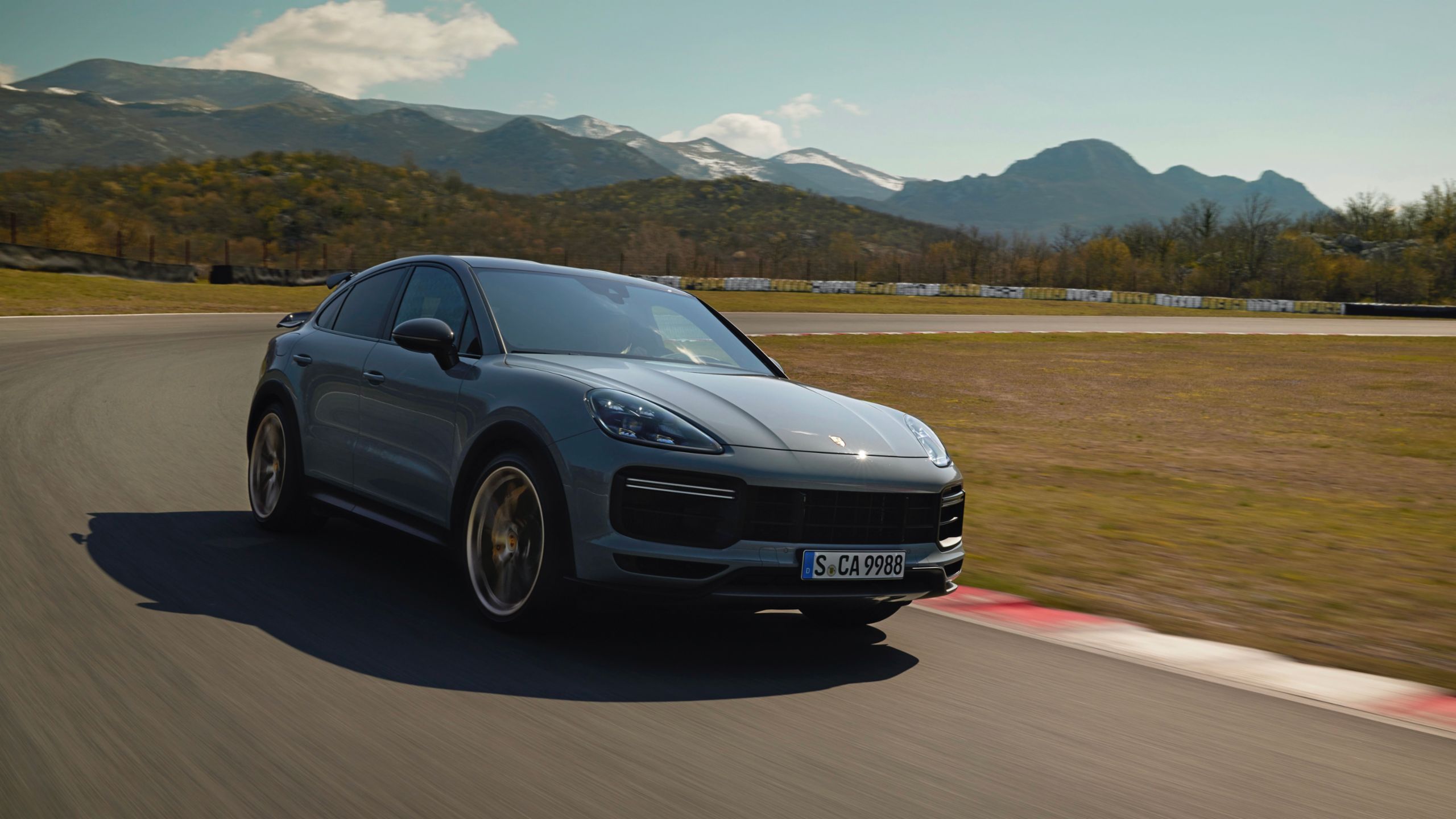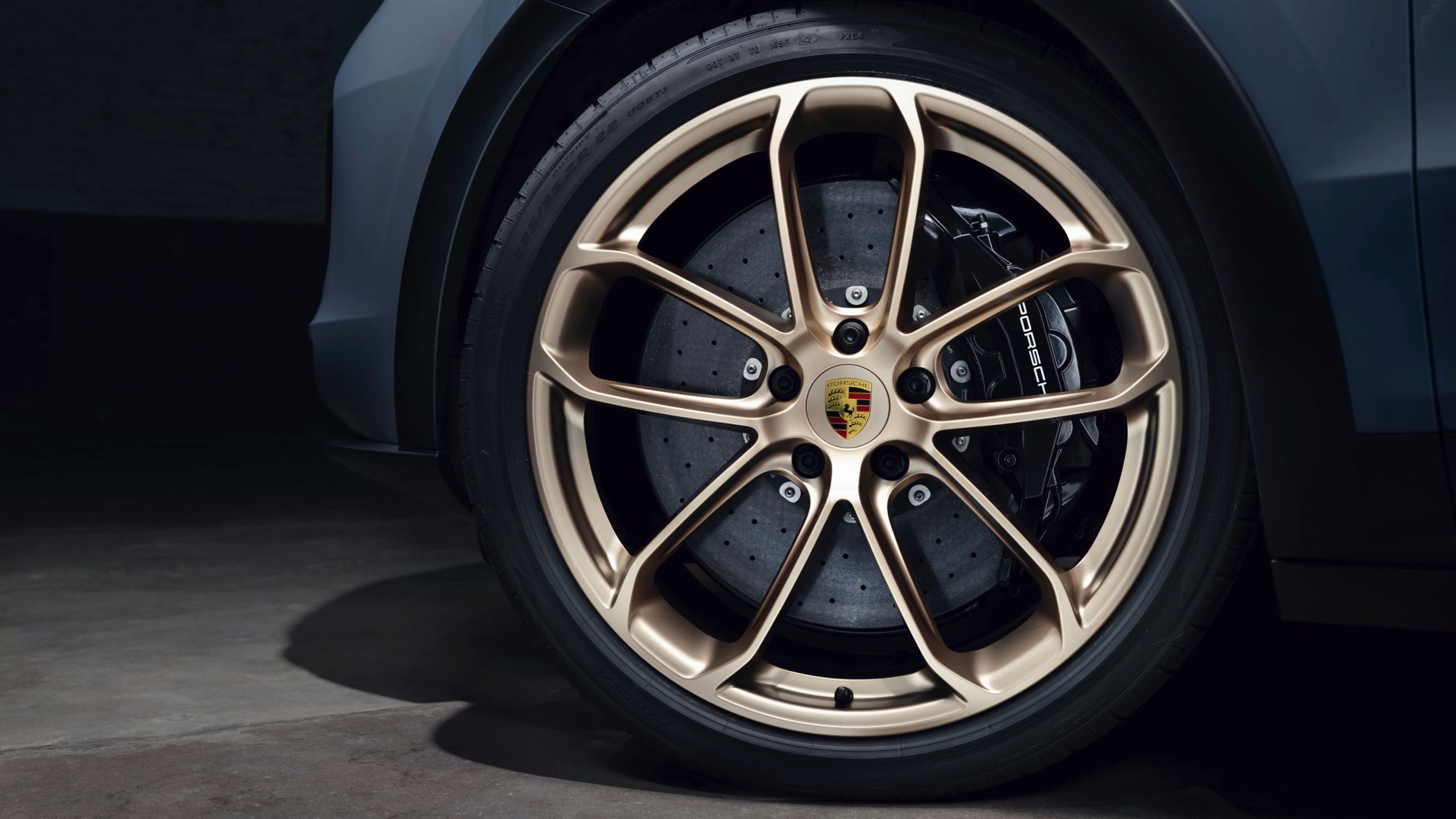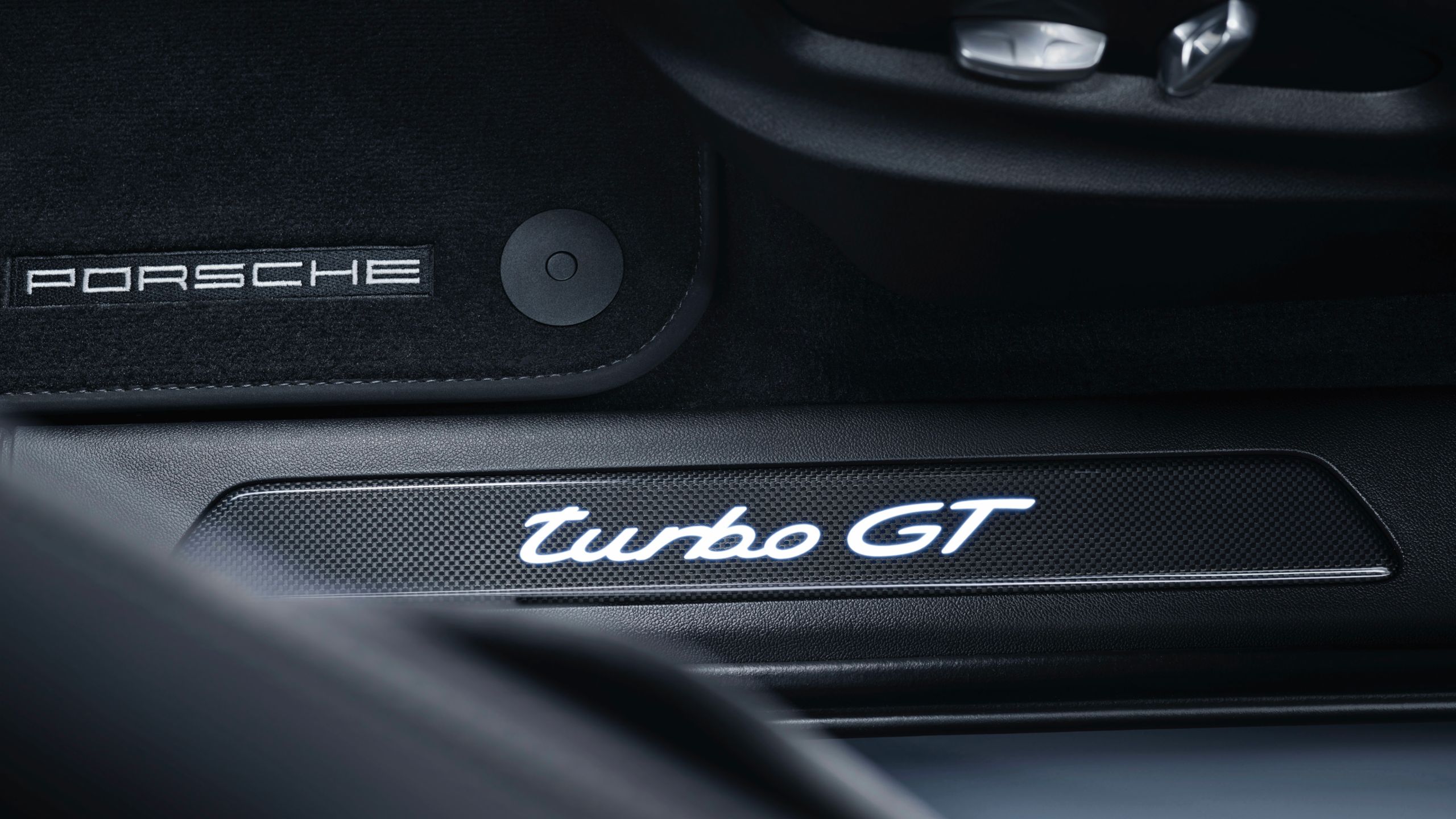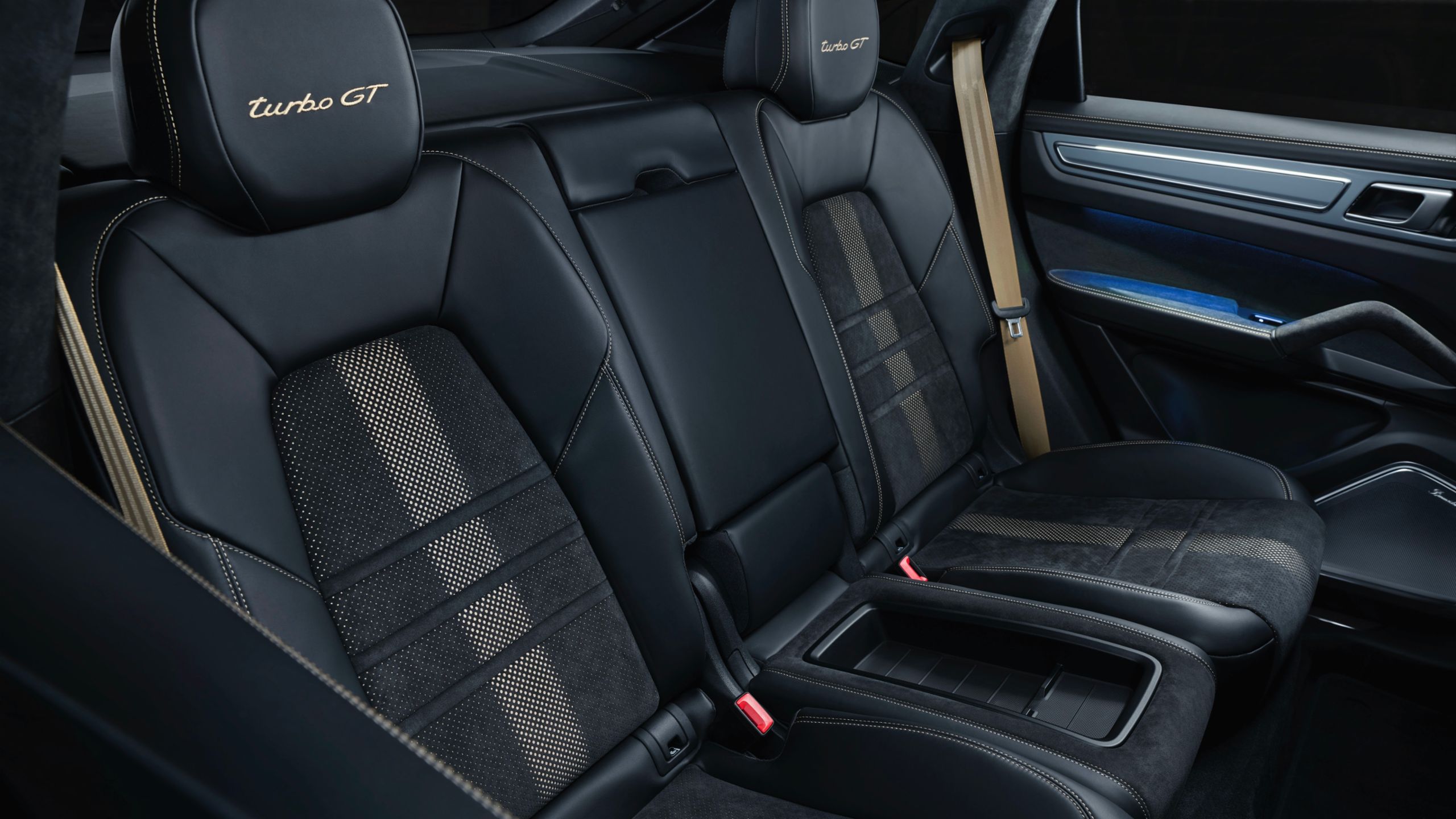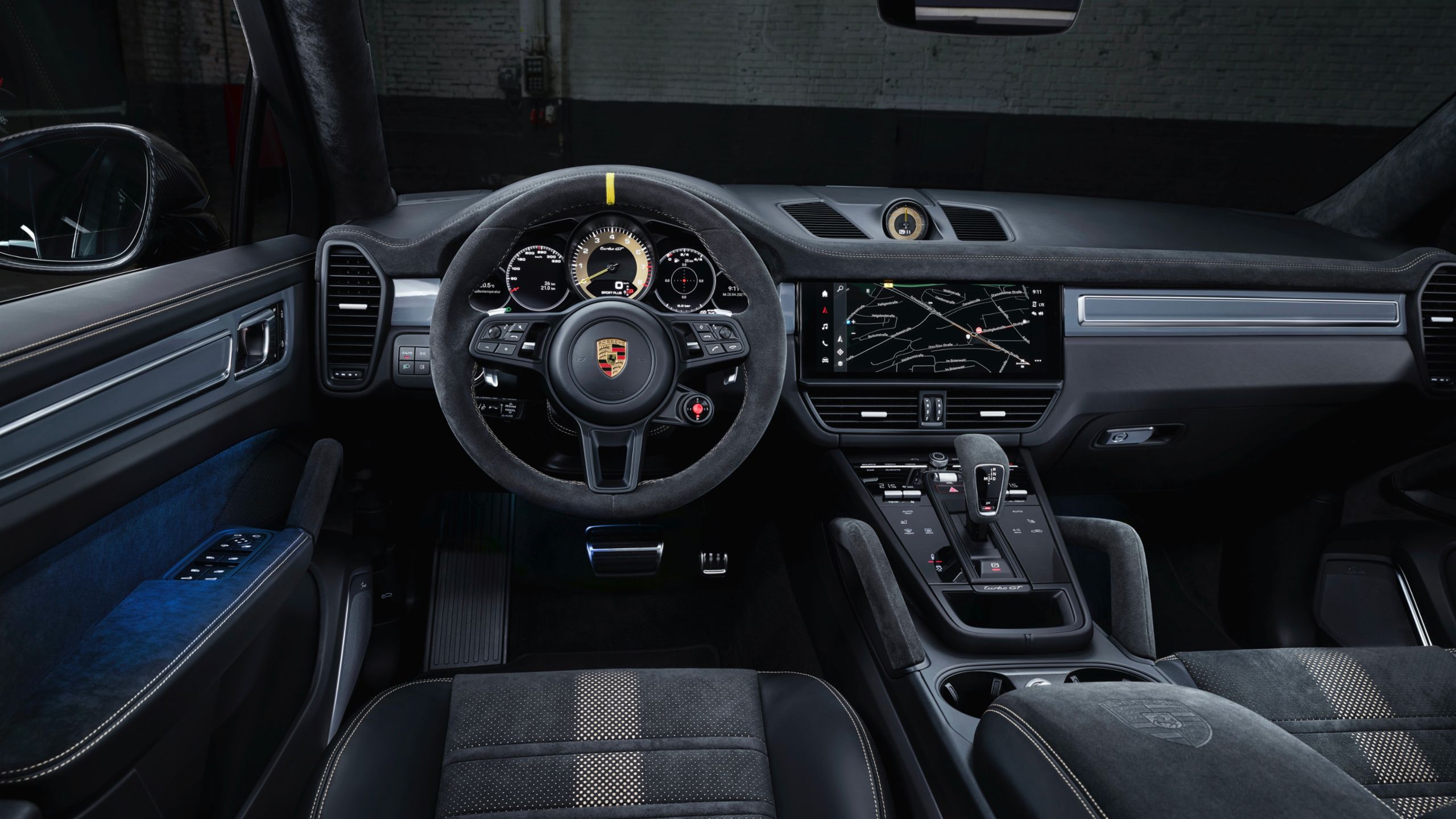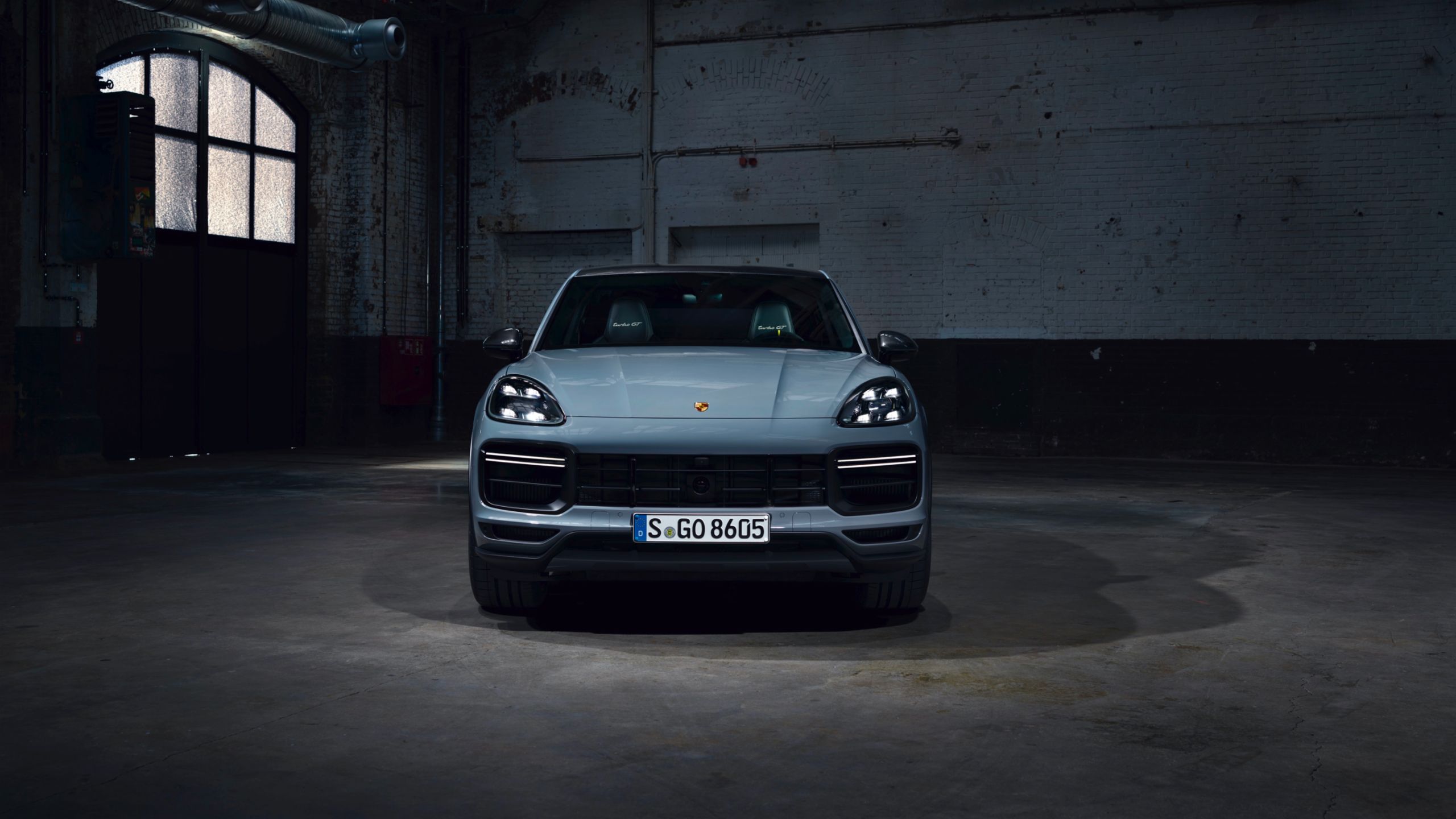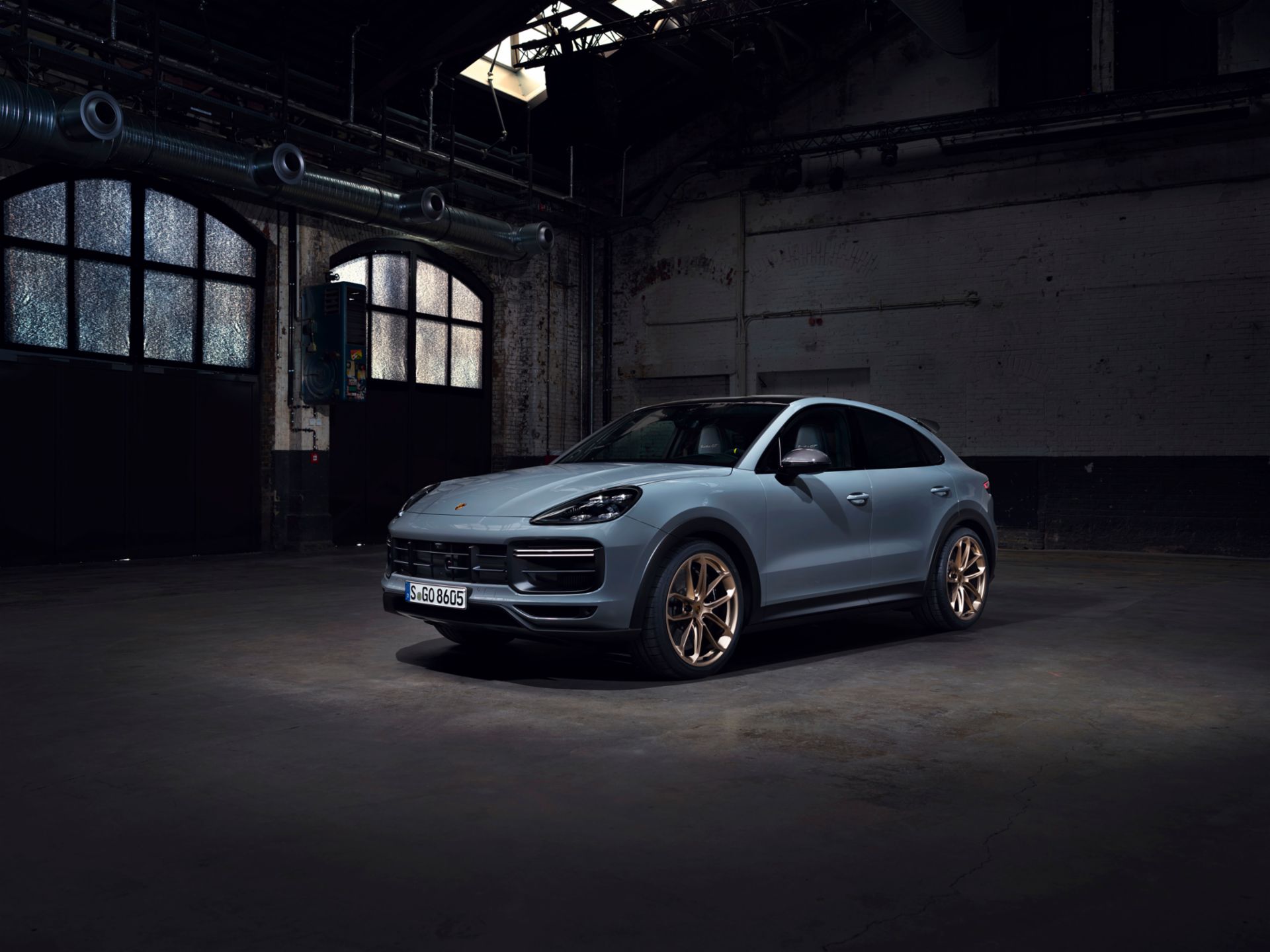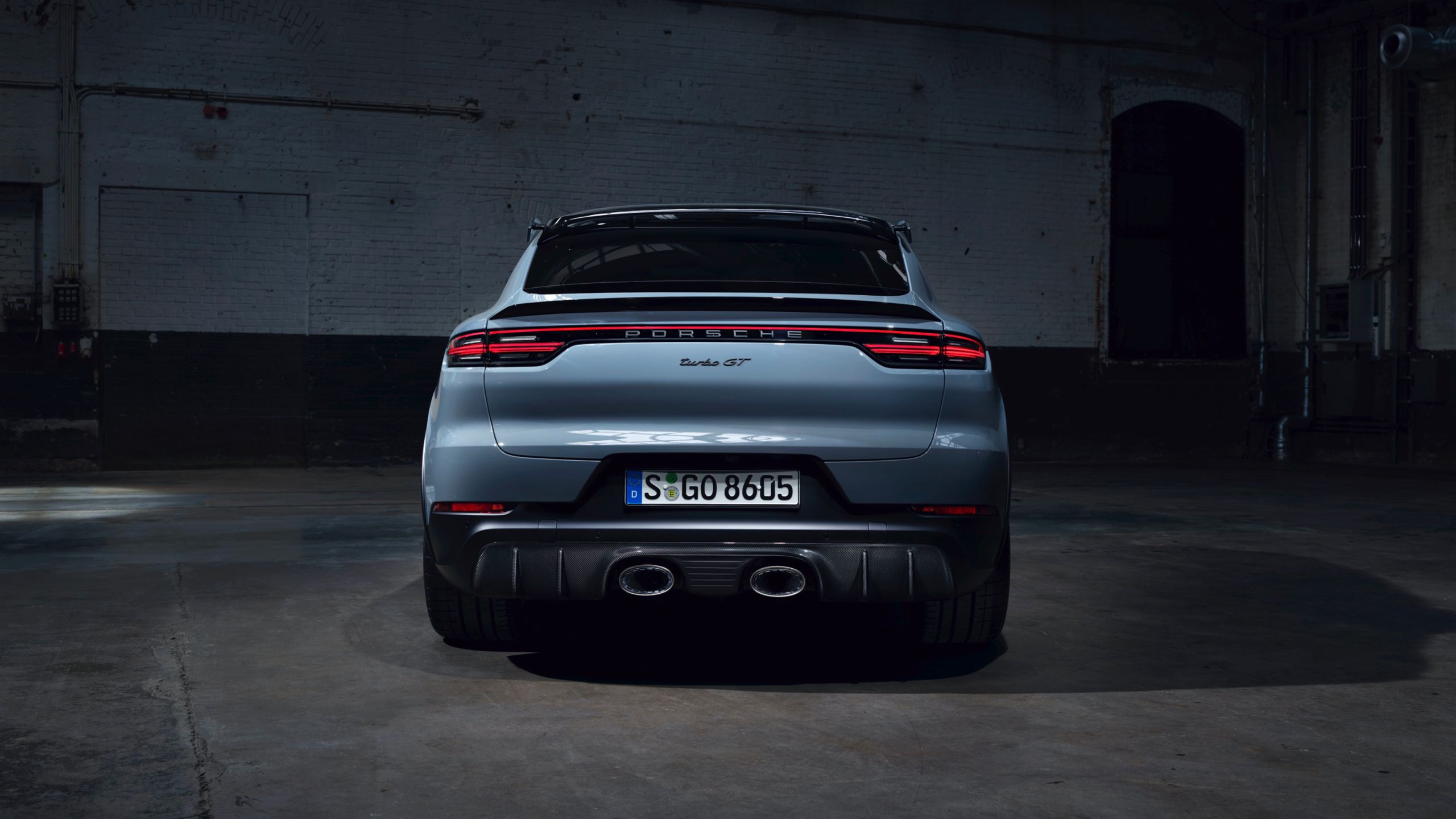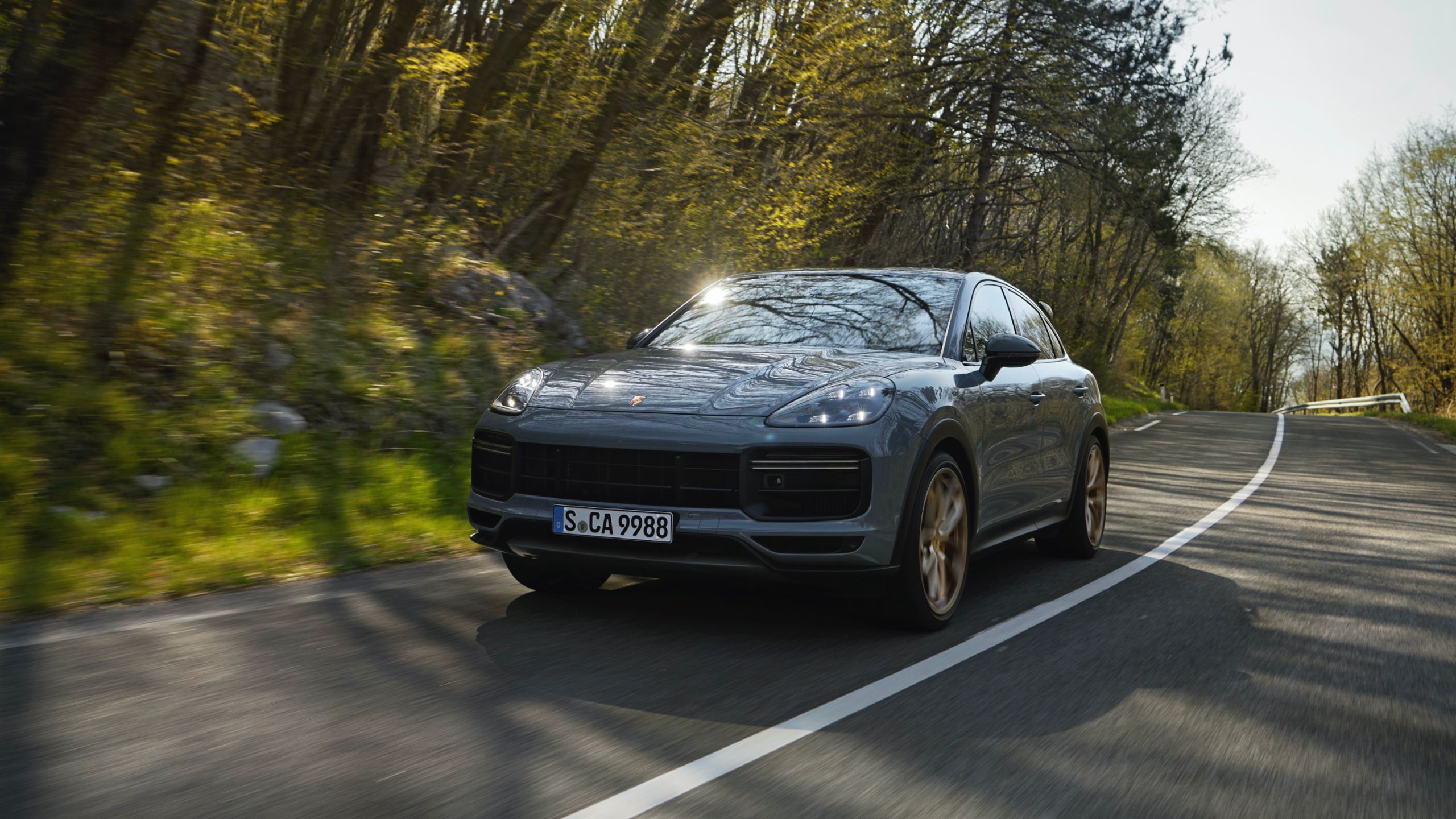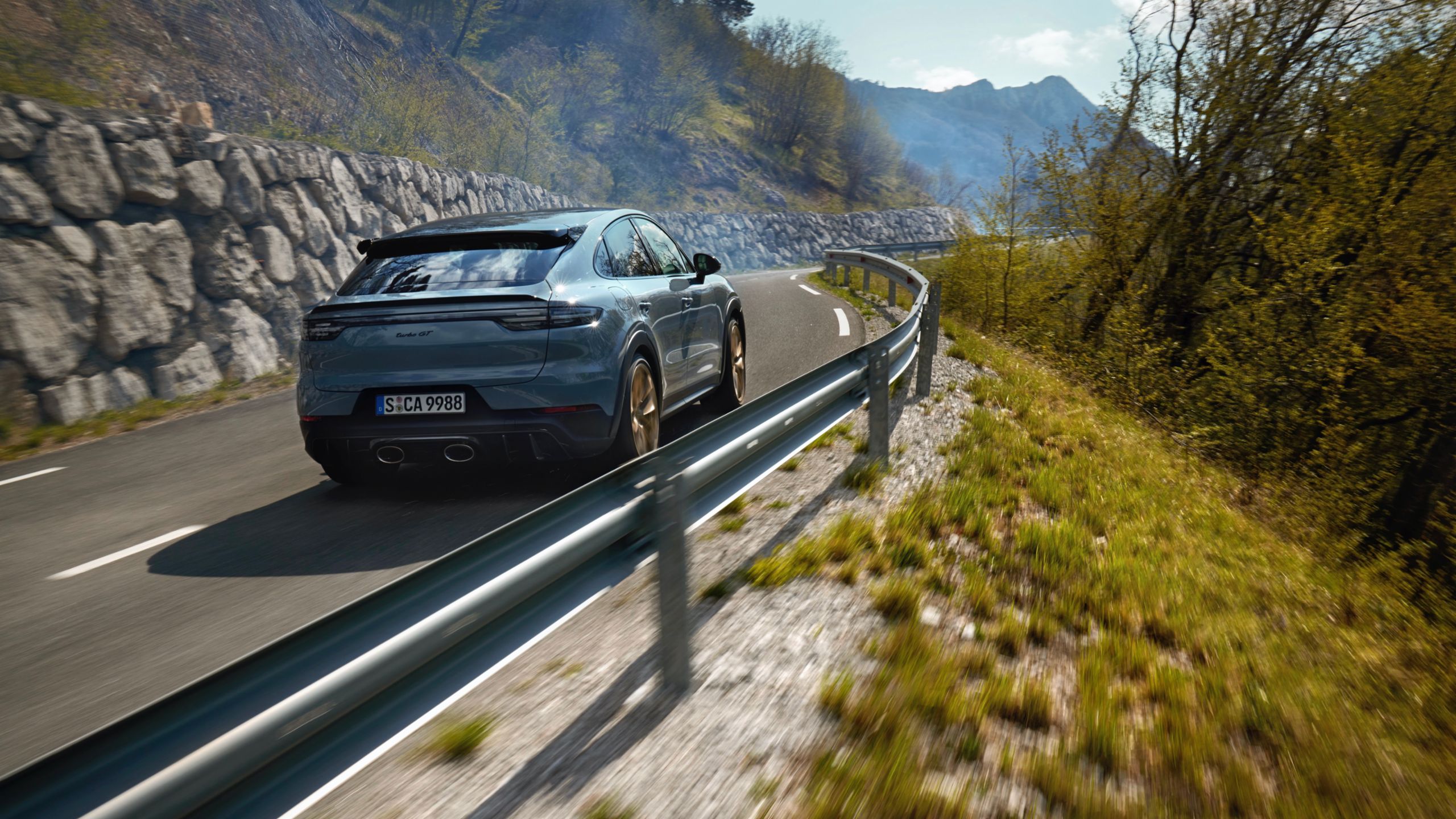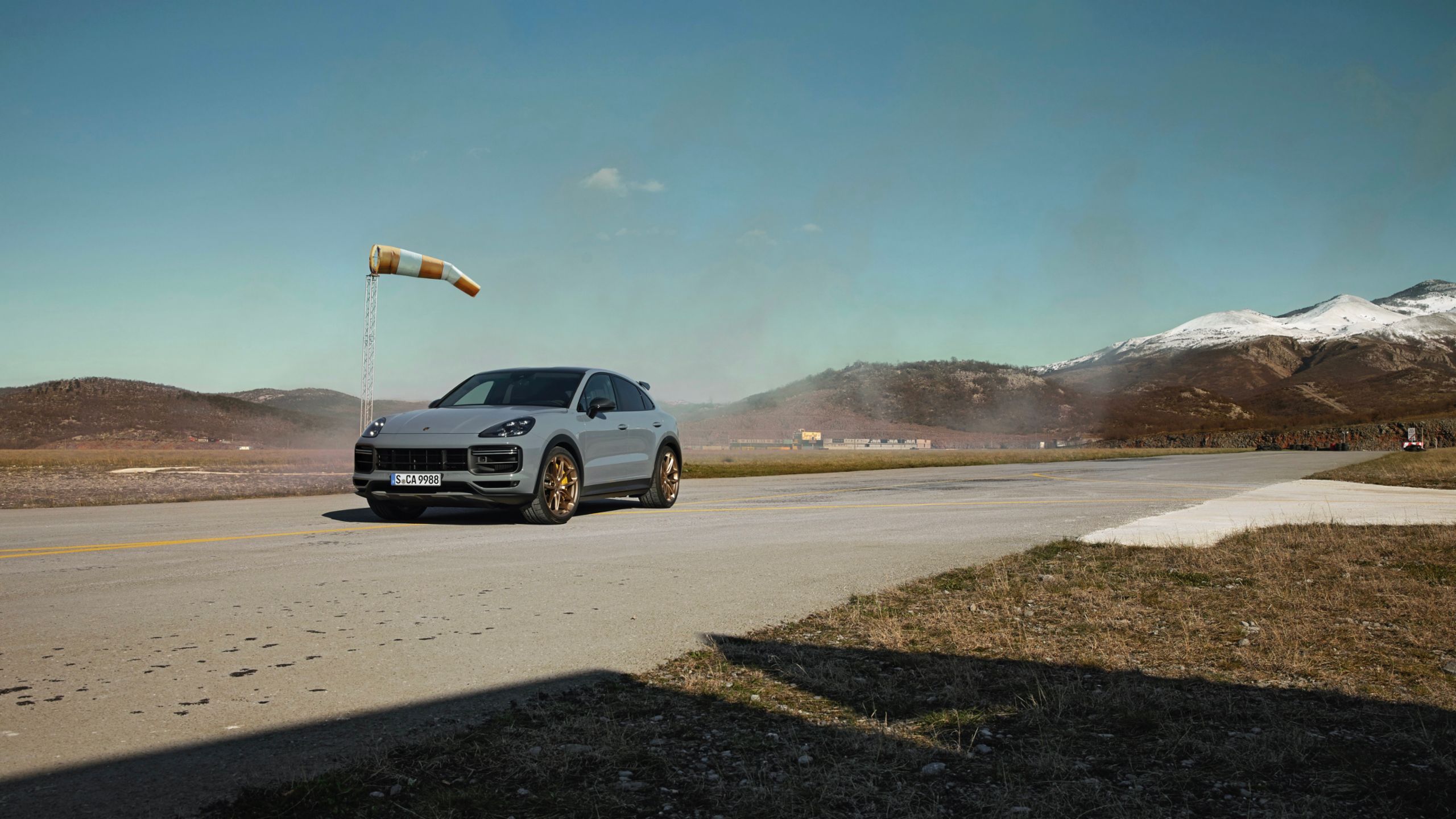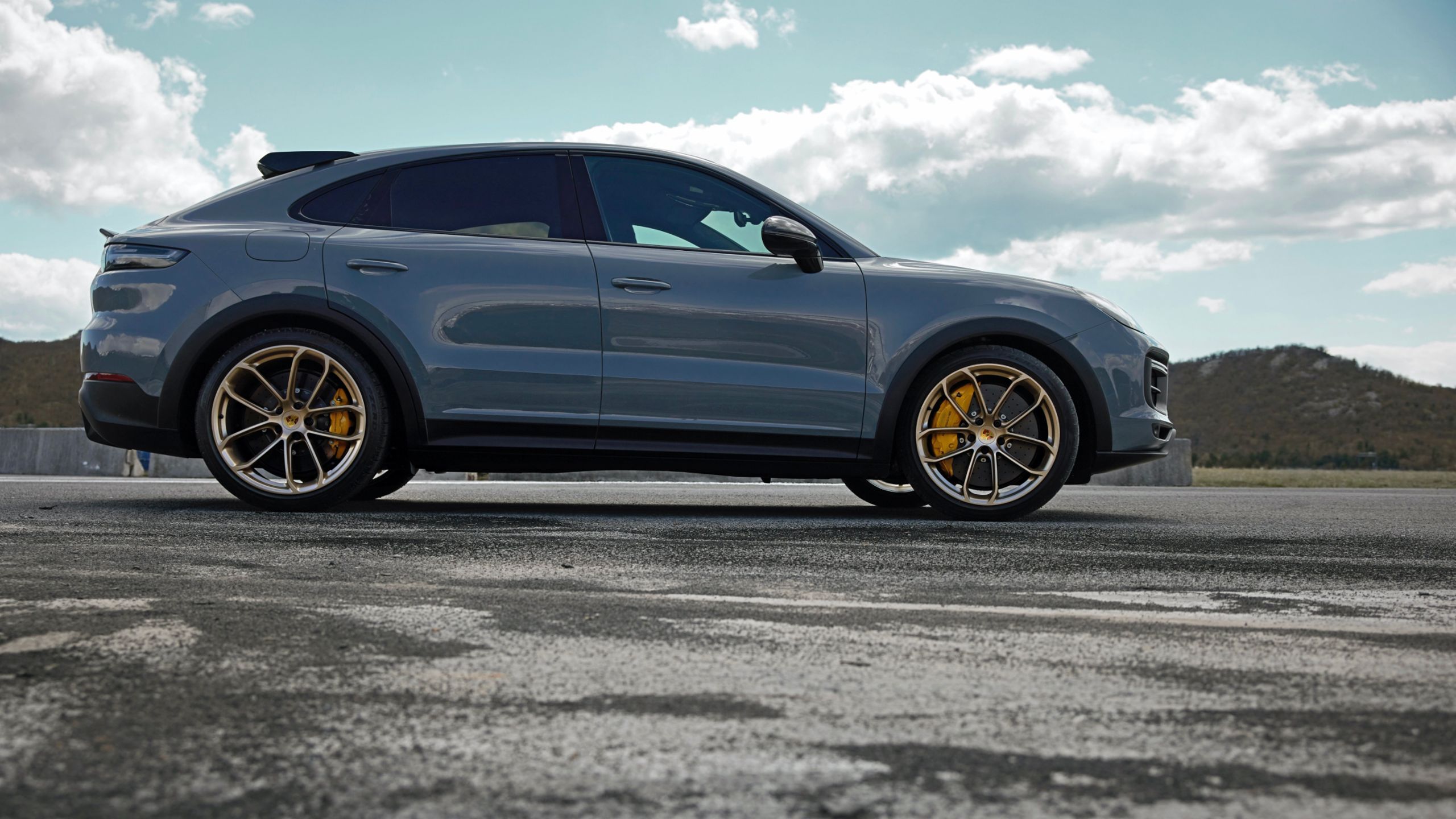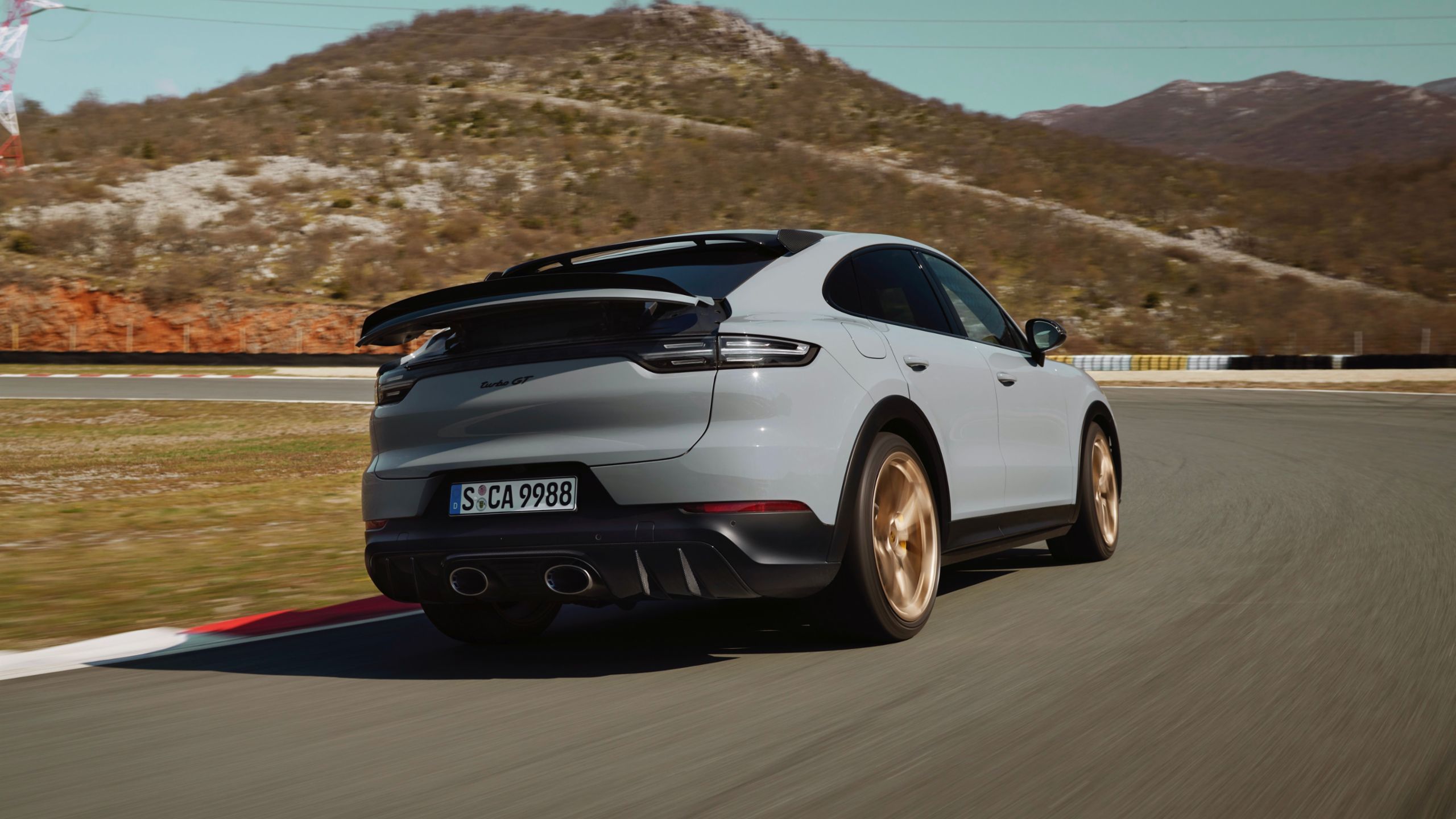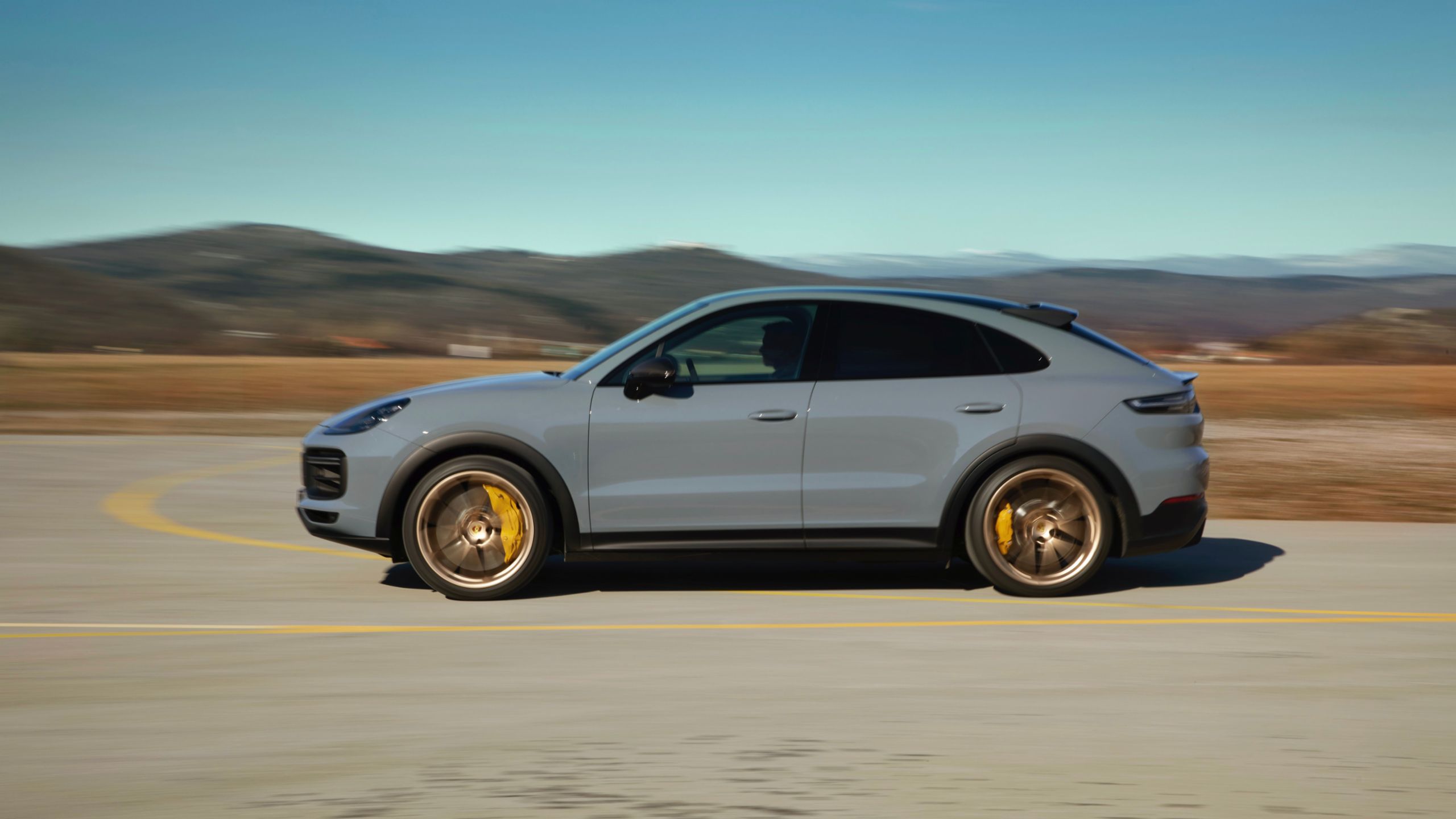Current Porsche Cayenne Turbo GT – Ultimate Guide
What is the Cayenne Turbo GT?
There was a time when it seemed inconceivable that Porsche could top the ludicrousness that’s the Porsche Cayenne Turbo S E-Hybrid. However, that’s exactly what the carmaker has done with its latest introduction to the Cayenne family. According to Porsche, this will be the last hoorah for the Cayenne lineup. There’s been a lot of thought and effort to create a performance masterpiece set up for maximum performance and handling. The all-new Cayenne Turbo GT, introduced for the 2022 model year, packs a fearsome punch that rivals will find hard to match. The term ‘Super SUV’ was made popular by a familiar relative, the Lamborghini Urus. However, the Cayenne Turbo GT might have just elevated that performance concept to a whole new level.
How Powerful is Porsche’s Latest Cayenne?
No, it’s not the most powerful. That crown still belongs to the 670-hp Cayenne Turbo S E-Hybrid. There are no electric motors for the Cayenne Turbo GT – not that it needs it in any case. Under the hood lies a tweaked Biturbo engine that’s currently Porsche’s most powerful eight-cylinder unit. The 4.0-litre V8 monster cranks out a truly impressive 631 hp at 6,000 rpm and 626 lb-ft of torque from just 2,300 rpm. That is a healthy increase over the 541 hp ‘standard’ Cayenne Turbo and just 10 hp shy of the imperious Lamborghini Urus.
Experiencing the Cayenne Turbo GT
The Cayenne Turbo GT was custom-engineered to blow your mind away, and it’s safe to say that it delivers on that count. The Cayenne Turbo GT weighs all of 5,000 lbs, but it puts down power in such a way that makes a total mockery of that bulk. Porsche claims a 3.1 second 0 to 60 mph sprint time. However, several on-road tests by motoring journalists show that this is a conservative estimate and sub-3-second times are well within reach. According to Car and Driver, the Cayenne Turbo GT hits 60 mph in just 2.8 seconds, while the quarter-mile run is completed in 11.1 seconds at 124 mph. These numbers were the exclusive preserve of supercars only a few years ago.
Yes, the Cayenne Turbo GT is blisteringly quick and even has a Nurburgring record as proof. However, that is not all Porsche wants you to remember about its newest Coupe SUV. A super-responsive ZF-sourced 8-speed transmission harnesses the Cayenne’s power and feeds it to a rear-biased and water-cooled torque-vectoring all-wheel-drive system. It differs from the air-cooled system used on other Cayenne models and has been tweaked specifically for the Cayenne Turbo GT. That package is bolstered by stiffer air springs, brake rotors as big as dustbin lids and a more aggressive four-wheel steering system that constantly communicates with the driver. Of course, there’s that monster V8 powerplant and an all-new titanium exhaust system, supplying all the drama befitting of a performance beast like the Cayenne Turbo GT.
The Cayenne Turbo GT is only available in coupe form and shares the same basic profile as the Cayenne Turbo Coupe. At first glance, it might be difficult to tell them apart. However, the Cayenne Turbo GT has some design and styling differences. They include the wider air intakes in the nose, black accents, two spoilers (the lower one is active) and a carbon-fibre roof. A keen eye will also notice the Cayenne Turbo GT sits slightly lower (about 0.7 inches) than the regular Cayenne Coupe.
And The Price?
There’s no mucking about with the pricing of the Cayenne Turbo GT. It is the most expensive model in the Cayenne lineup, with a sticker price of $188,700, and that’s if the buyer successfully resists the temptation to check out Porsche’s notorious options list. However, the Cayenne Turbo GT might actually be a great value-for-performance deal, especially when it’s compared to much more expensive rivals like the Lamborghini Urus or the Aston Martin DBX 707.
Pictures
Videos – 2022 Porsche Cayenne Turbo GT
Press Release (
New sporting hero from Porsche: the Cayenne Turbo GT
Porsche rounds off the Cayenne model range with a sporting hero: consistently set up for maximum performance and handling, the new Cayenne Turbo GT combines outstanding driving dynamics with a high degree of everyday usability.
Its 471 kW (640 PS, Cayenne Turbo GT: Fuel consumption combined (NEDC) 11.9 l/100 km, Fuel consumption combined (WLTP) 14.1 l/100 km, CO₂ emissions combined (NEDC) 271 g/km, CO₂ emissions combined (WLTP) 319 g/km) four-litre biturbo V8 provides the basis for superb driving characteristics. With 67 kW (90 PS) more than the Cayenne Turbo Coupé (Cayenne Turbo Coupé: Fuel consumption combined (NEDC) 11.6 l/100 km, Fuel consumption combined (WLTP) 14.1 – 13.5 l/100 km, CO₂ emissions combined (NEDC) 264 g/km, CO₂ emissions combined (WLTP) 319 – 307 g/km) and maximum torque of 850 Nm (an increase of 80 Nm), the 0-100 km/h sprint is reduced to 3.3 seconds (0.6 s less) and top speed is now 300 km/h (an increase of 14 km/h). With even sportier lines and available exclusively as a four-seater Coupé, the Cayenne Turbo GT comes with all available chassis systems fitted as standard and performance tyres developed specially for this model. The powertrain and chassis also have a unique set-up specifically tuned for the Cayenne Turbo GT. The result is a harmonious overall concept with superb racetrack capability. This has been proven by Porsche test driver Lars Kern, who lapped the 20.832 km Nürburgring Nordschleife with the Cayenne Turbo GT in a time of 7:38.9 minutes, setting a new official SUV record.
Compared to the Cayenne Turbo Coupé, the Turbo GT rides up to 17 millimetres lower. Based on this, both the passive chassis components and active control systems have been re-engineered and optimised for handling and performance. They also feature specific calibration to guarantee perfect interaction between them. As an example, the rigidity of the three-chamber air suspension has been increased by up to 15 per cent, and the damper characteristics of the Porsche Active Suspension Management (PASM) as well as the application of the Power Steering Plus and rear-axle steering have also been adapted. The Porsche Dynamic Chassis Control (PDCC) active roll stabilisation system now operates with performance-oriented control software.
The result is even better roll stability and roadholding, as well as more precise turn-in behaviour at higher cornering speeds. In line with this, the Porsche Torque Vectoring system allows higher torque bias ratios. The comprehensively optimised front axle also improves handling. Compared to the Turbo Coupé, its front wheels are an inch wider and negative camber has been increased by 0.45 degrees to give the new 22-inch Pirelli P Zero Corsa performance tyres, specially developed for the Turbo GT, a larger contact patch. Braking duties are performed by the standard-fit Porsche Ceramic Composite Brake (PCCB) system.
Quicker-shifting Tiptronic S and titanium sports exhaust system
The Cayenne Turbo GT’s biturbo engine is currently Porsche’s most powerful eight-cylinder unit. The most extensive upgrades were carried out in the areas of the crankshaft drive, turbocharger, direct fuel injection, induction system and intercooler. The V8 of the Turbo GT differs from that of the Turbo Coupé in fundamental elements such as its crankshaft, connecting rods, pistons, timing chain drive and torsional vibration dampers. Given the increase in power to 471 kW (640 PS, Cayenne Turbo Coupé: Fuel consumption combined (NEDC) 11.6 l/100 km, Fuel consumption combined (WLTP) 14.1 – 13.5 l/100 km, CO₂ emissions combined (NEDC) 264 g/km, CO₂ emissions combined (WLTP) 319 – 307 g/km), these components have been designed for higher peak loads and improved driving dynamics.
The faster-shifting eight-speed Tiptronic S and the Porsche Traction Management (PTM) system have also been modified. There is also additional water cooling for the transfer case. The standard sports exhaust system, with its central tailpipes, is unique to the Cayenne Turbo GT. From the middle of the vehicle, the exhaust system, including the rear silencer, is made from lightweight and particularly heat-resistant titanium. An additional weight saving is achieved through the omission of the centre silencer.
Sporty equipment: lots of carbon on the exterior, lots of Alcantara in the interior
Optionally available with paintwork in the new Arctic Grey colour, the Cayenne Turbo GT underlines its exceptional athleticism through the outstanding features of its progressive design. These include a GT-specific front apron with striking spoiler lip and enlarged side cooling air intakes, which create a unique front view. A contoured carbon roof and black wheel arch extensions, together with 22-inch GT Design wheels in Neodyme, dominate its side view. The carbon side plates fitted lengthwise to the roof spoiler are GT-specific, as is the adaptively extendable rear spoiler’s lip, which is 25 mm larger than that fitted to the Turbo. This increases downforce at the car’s top speed by up to 40 kilograms. The rear view is rounded off by a striking diffuser panel made of carbon.
Debut in the Turbo GT: new infotainment system for the Cayenne
The sporty character of the Cayenne Turbo GT is highlighted by the high-quality standard equipment and extended Alcantara features of its interior. Eight-way sport seats in the front and a sport rear seat system with two seats are standard. They each come GT-specific with perforated seat centre panels in Alcantara, contrast accents in Neodyme or Arctic Grey and ‘turbo GT’ lettering on their headrests. As is expected on Porsche’s sports cars, the multifunction sports steering wheel features a yellow 12 o’clock marking. Depending on the specified trim, select accent strips are finished in matt Black.
With the Turbo GT, the next-generation Porsche Communication Management (PCM) system is launched onto the market with improved performance, a new user interface and new operating logic in the Cayenne. As before, PCM 6.0 is fully compatible with Apple CarPlay but now also allows for in-depth integration of Apple Music and Apple Podcasts. In addition, the infotainment system now also includes Android Auto, which means that all popular smartphones can now be integrated.


